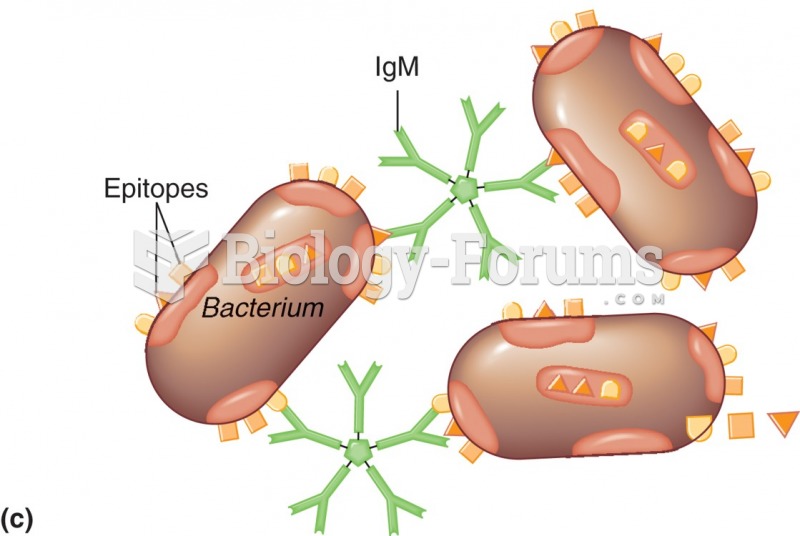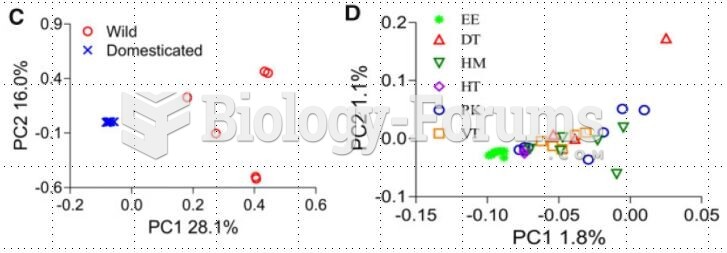|
|
|
Bacteria have been found alive in a lake buried one half mile under ice in Antarctica.
Over time, chronic hepatitis B virus and hepatitis C virus infections can progress to advanced liver disease, liver failure, and hepatocellular carcinoma. Unlike other forms, more than 80% of hepatitis C infections become chronic and lead to liver disease. When combined with hepatitis B, hepatitis C now accounts for 75% percent of all cases of liver disease around the world. Liver failure caused by hepatitis C is now leading cause of liver transplants in the United States.
Vaccines cause herd immunity. If the majority of people in a community have been vaccinated against a disease, an unvaccinated person is less likely to get the disease since others are less likely to become sick from it and spread the disease.
Illness; diuretics; laxative abuse; hot weather; exercise; sweating; caffeine; alcoholic beverages; starvation diets; inadequate carbohydrate consumption; and diets high in protein, salt, or fiber can cause people to become dehydrated.
According to the CDC, approximately 31.7% of the U.S. population has high low-density lipoprotein (LDL) or "bad cholesterol" levels.
 The bridging ability of IgM: (a) Pictorial view of IgM bridging of red cells. (b) Macroscopic view ...
The bridging ability of IgM: (a) Pictorial view of IgM bridging of red cells. (b) Macroscopic view ...
 The bridging ability of IgM: (a) Pictorial view of IgM bridging of red cells. (b) Macroscopic view ...
The bridging ability of IgM: (a) Pictorial view of IgM bridging of red cells. (b) Macroscopic view ...





